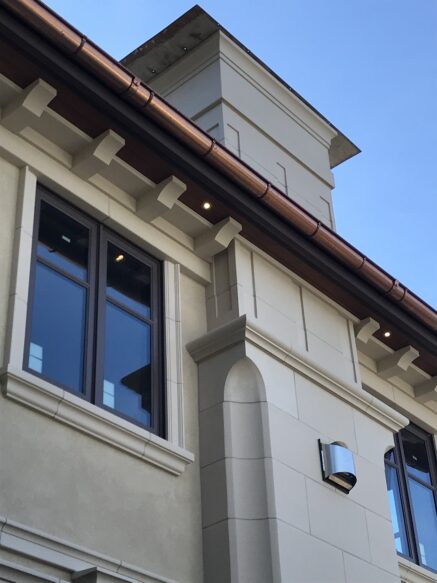Architectural EPS (Expanded Polystyrene) is increasingly recognized in the construction industry for its insulation properties and lightweight nature. It is a very versatile, cost effective, and easy to install material that is changing the way architects for both commercial *and* residential properties envision their designs.
But architectural EPS has benefits that go well beyond these well known advantages, and when you’re choosing a building material, it helps to have an understanding of all of the advantages so that you can make the best decision for your project. One of the lesser known advantages is the way that architectural foam can support pest management efforts.
According to Michael Abe of ExtermPRO, a pest control company in the United States, “Pest management is rarely the first thing on an architect’s mind when they choose what materials to use, but it is an important one, because it has the potential to dramatically improve the satisfaction with the property.”
Insights into Architectural EPS and Its Impact on Pest Management
Architectural EPS is a lightweight, foam-like material composed of reinforced polystyrene beads coated for durability with reinforced cement. It is strong but incredibly lightweight – so much so that most of the products we create can be installed with a single worker and contractor glue.
This unique design and structure provides several advantages that can have benefits for pest management. These include but are not at all limited to:
- Inert Nature – EPS is an inert material, meaning it does not provide a food source for pests. This characteristic is crucial in preventing infestations, as pests are less likely to inhabit materials that do not offer sustenance.
- Tight Construction – EPS can be tightly fitted and sealed within construction spaces, leaving minimal gaps for pests to enter and nest.
- Resistance to Decay – Unlike organic materials, EPS does not rot or decay, making it less attractive to pests that feed on or inhabit decomposing materials.
- No Breaking Waterproof Barrier – Because GFRC can be installed with contractors’ glue and no manual reinforcement, it does not break the waterproof barrier, preventing pests from entering and also reducing the risk of water damage.
- Non-porous – Architectural foam is non-porous, which means there are no places for pests to crawl into or hide, and no moisture buildup that can sometimes attract pests to a property.
These are only a few of the many ways that architectural EPS can prevent pests. The inherent properties of EPS offer a durable solution to pest problems, reducing the frequency of pest control treatments. It is also better for the environment, as EPS is known for its energy efficiency and, when used effectively for pest control, can reduce the reliance on chemical pest treatments, aligning with environmentally conscious building practices.
“Building materials play a key role in pest control” says Mike, owner of Adapt Pest Management. “Choosing the right materials at the time of construction can dramatically improve long term pest management efforts.”
Adopting EPS for Integrated Pest Management in Building Design
Very few, if any, contractors are choosing architectural EPS foam for its pest management capabilities. But when you are looking at different options and trying to make an informed decision, it helps to know all of the benefits of the material.
By choosing Architectural EPS for construction projects, builders and architects are investing in a material that not only enhances building performance but also contributes to a healthier, pest-free environment.
For more detailed information about the use of Architectural EPS in construction and its role in pest management, please reach out Patterson Whittaker Architectural Profiles, today. We are committed to offering innovative and sustainable solutions tailored to the modern construction industry’s needs.





Recent Comments